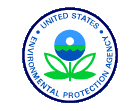|
The Design for the Environment (DfE) Program is a voluntary
partnership program that works directly with industry to integrate
health and environmental considerations into business decisions.
Businesses today face a variety of challenges, including
maintaining high-quality goods and services at a low cost; staying
competitive in a global marketplace; and meeting consumer
preferences for more environmentally friendly products. To help
businesses meet these challenges, DfE partnerships inform businesses
in the design or redesign of products and processes that are
cleaner, more cost-effective, and safer for workers and the public.
The DfE process promotes voluntary environmental improvement by
addressing industries' need for key information on how to
incorporate environmental concerns into business decisions. The
process systematically:
- Identifies the array of technologies, products, and processes
that can be used to perform a particular function within an
industry and related pollution prevention opportunities.
- Evaluates and compares the risk, performance, and cost
tradeoffs of the alternatives.
- Disseminates this information to the entire industry
community.
- Encourages and enables use of this information by providing
mechanisms and incentives to institutionalize continuous
environmental improvement.
Why Design for the Environment?
DfE provides decision-makers with information, tools, and
incentives to make informed decisions that integrate risk,
performance, and cost concerns. A DfE project potentially provides
many benefits, including:
- Reduced health, safety, and ecological risks.
- Increased efficiency and customer acceptance.
- Improved worker morale and productivity.
- Reduced regulatory burden.
- Improved channels of communication, cooperation, and
collaboration among stakeholder organizations.
- Expanded business and market opportunities.
back
to top |
|
The DfE Approach:
|
Examines the hazards of chemicals used in
an industry.
Assesses
alternative processes, formulations, and emerging
technologies.
Promotes risk
reduction through cleaner technologies and safer chemical
choices. | |

